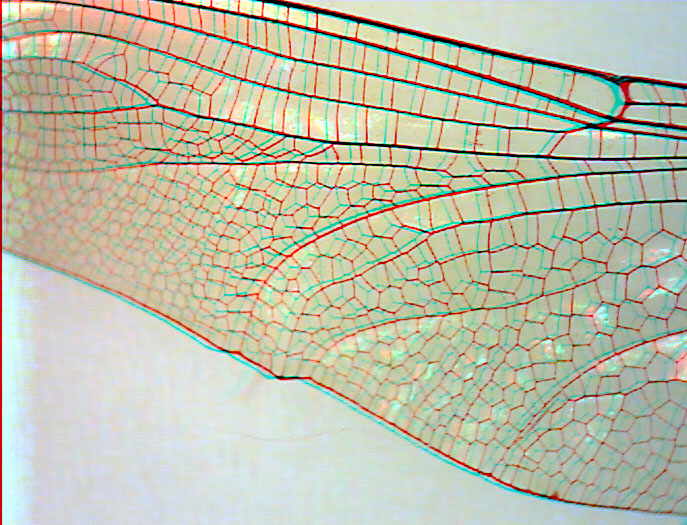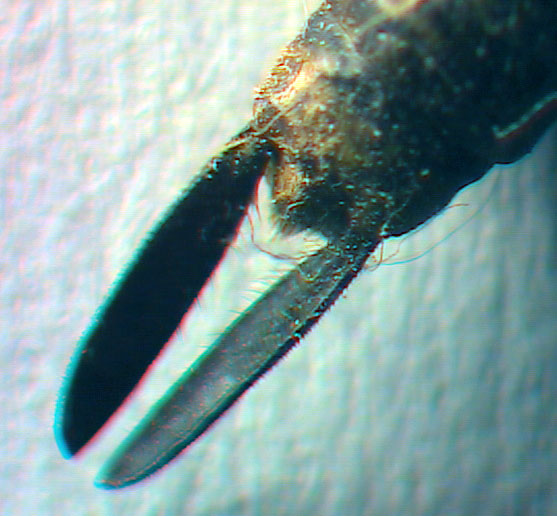When Dragons fall from the sky |
|||||
A 3D article by Maurice
Smith - March 2000
|
|||||
The dragonfly wing is a wonderful triumph by nature over gravity. In flight, the wing is capable of twisting along the long axis and 'cambering' - both properties which enable superior control and manoeuvring in the air. Numerous small veins, spread across the wing, assist in giving the wing both strength and flexibility. The gliding flight of dragonflies can potentially be understood by applying the science of aerodynamics. This is a theory describing how aircraft with fixed wings achieve lift. Surprisingly, to understand how insects like dragonflies, achieve and maintain a 'hovering' posture - we would need to apply the mathematics of 'unsteady-states' : a complex topic still not fully understood! |
|||||
|
|||||
"A fallen Dragon! The mighty wing." |
|||||
One could write an entire book on the courtship and reproductive habits of dragonflies and damselflies so to begin to explain this topic in a single paragraph is unrealistic. One interesting aspect however, is the male (our fallen dragon is a male) has a pair of claspers at the rear of the abdomen (see below). These are used to secure a hold on the female during mating. The coupling of a pair of dragonflies may occur in flight, and when it does, the pair fly in tandem - often with one dragonfly taking control of steering and manoeuvring, and the other providing power and thrust for flight. The male may also use its claspers to rescue struggling females from the water and may be rewarded by copulation if the females still retain eggs. A second curious fact about dragonfly reproduction is that male dragonflies have two sets of genitals! |
|||||
|
|||||
"A fallen Dragon! Male claspers!" |
|||||
In closing It
is, I hope, a worthy note to explain that a basic stereo
microscope with a maximum magnification of x40 is all
that is required to study insects in great depth. All
these images were taken through a stereo - most of them
at low powers of magnification ( typically x 15, x25,
x40). The 3d presentation was accomplished by simply
putting a book, to serve as a straight edge, on the work
bench next to my microscope, and then moving a piece of
cardboard covered with white paper holding the dragonfly,
along the straight edge to take 2 separate photographs:
one for the left image and one for the right. Computer
image-editing packages can be used to combine these
images into a stereo final image. My thanks to John Wells for
observing a dragon falling from the sky over his
garden... |
|||||
Comments please to the author |
|||||
A 3D easy-read article by Maurice Smith |

